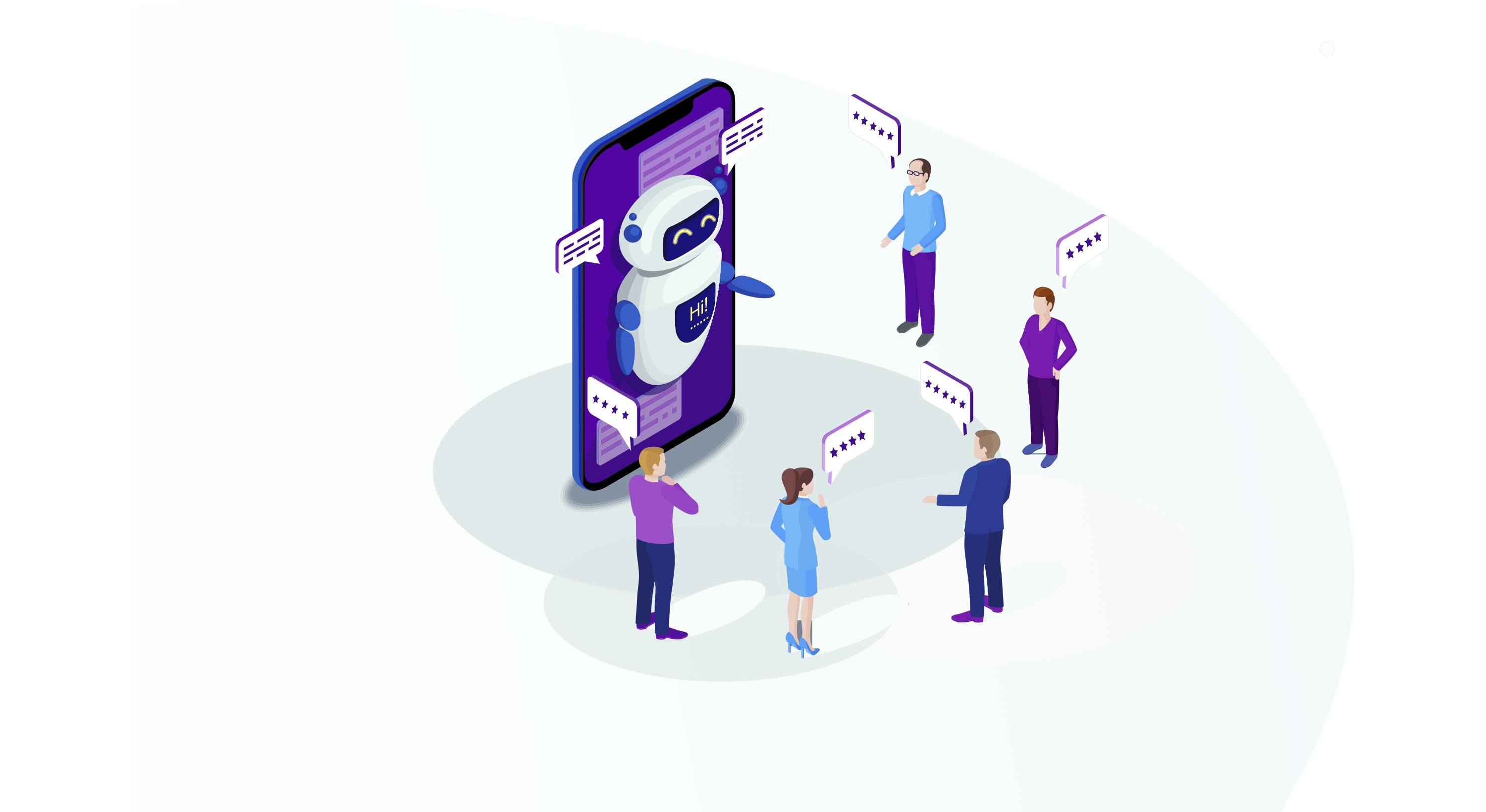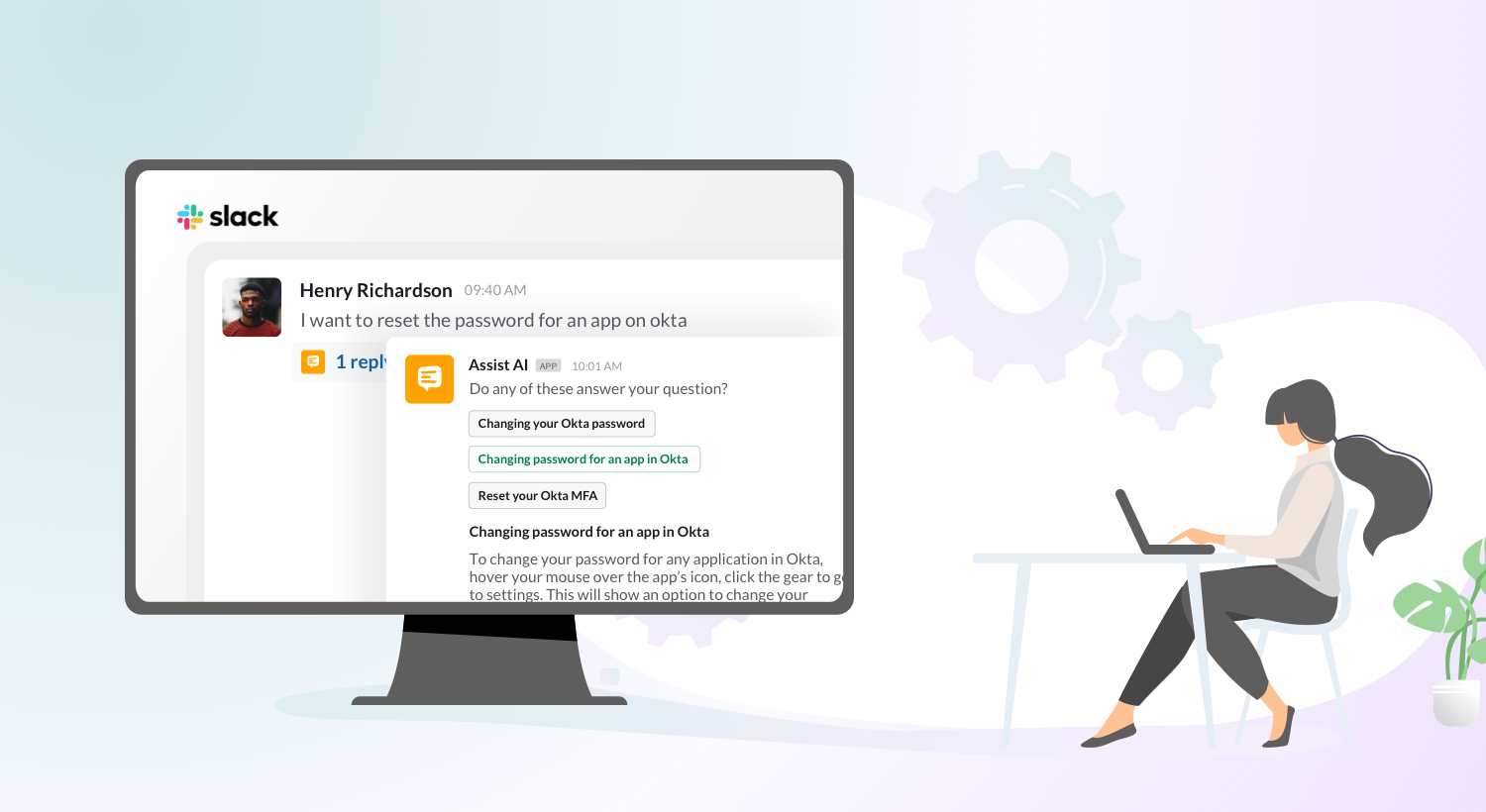In the last few years, the chatbots have transformed from Clippy, the animated paper clip, in the old version of Microsoft Office to Amazon’s Alexa. With AI-derived business projected to be valued at $3.9 trillion by 2022, AI-powered chatbots are here to transform customer service. In this head-on competition, let us look at how organizations can use AI Chatbots to improve customer satisfaction.
What is a Chatbot?
A chatbot is an artificial intelligence software designed to interact with visitors and provide them with answers while sifting through chunks of data. Because of their quick response and easy implementation, they are great for repetitive jobs. Chatbots free up your actual human agents of repeated work so that they focus on more complex tasks.

Why Do You Need Chatbots?
Chatbots are now being extensively used in customer support for multiple industries like retail, e-commerce, financial services, healthcare, and many more. Be it messaging apps like Facebook messenger bot, WhatsApp or the ones implemented on your website, Chatbot technology brings a lot of value to customer service teams. In our last blog, we had discussed 10 ways how chatbots can take your customer service offerings to the next level. Let’s quickly recap some of the use of chatbots again.
- Round the clock service: Provides 24/7 support to your customers, without needing to take a vacation over the holidays.
- Faster Resolutions: As a bot is programmed to analyze data in seconds, visitors can receive resolutions to their issues in seconds too.
- Scalability and Cost Savings: Chatbots are relatively easy and cheaper to implement than hiring, training, and managing human resources. Also in times of heavy traffic, chatbots can be scaled quickly and made to adapt to the growing needs.
- Accessibility: Because a bot is available on the website, mobile apps, and multiple other platforms, visitors can now quickly access help. They do not have to be on phone calls with long wait times only to speak to an agent for a simple query.
- Live Chat + Chatbot: Chatbots are not meant to replace human agents. If anything, they are made to complement them. Chatbots are handy when the frequently asked questions are simple and monotonous. As chatbots deflect these kinds of questions, the agent’s time is saved on repetitive questions and instead use this free time to tackle more complex questions.
- Lead Generation: AI-powered Chatbots today are very intelligent. Intelligent enough to identify a visitor’s product interests, likes, and dislikes and provide product recommendations. They also prove helpful as they collect customer information on pre-chat or post-chat information, helping build a lead queue for the Sales teams.
- Personalized Support: AI-powered Chatbots can easily be implemented to provide a tailored and personalized experience to customer queries helping drive up customer engagement.
- Data Analytics: Data and transcripts from chatbot conversations can prove to be very helpful. With the analysis of metrics and mining of collected data, organizations can understand and prune customer journeys better and gain deeper transparency into employee and customer behavior.
How can businesses use Chatbots?
How can businesses use Chatbots?
The primary reason organizations are looking for automation and implementing chatbots is to increase customer satisfaction and to improve business sales and profits. To provide the best customer experience to your visitors, it is important to constantly keep improving the bot. Here are some tips for your chatbots to improve customer satisfaction and boost business performance.
Keep conversation intuitive
An essential part of the design flow, conversation flow is the effortless progression of ideas and responses in a conversation. As visitors enter the chat, they should be able to navigate through the options easily and find exactly what they’re looking for. It is imperative that implementation teams examine historical data to understand the customer journey and have a defined flow from the starting till the conclusion. The options for frequently asked questions must also be segmented logically. For example, if a customer is looking to track the status of their recently ordered headphones while the other one is looking to track the status of the RMA, it’d be a good idea to have a section for “Tracking Statuses”.
Provide visitors with correct information
Especially with the eruption of social media, nothing can damage your brand image more if you do not provide correct and authentic information to your customers. While this seems like an innate part of customer service, thousands of companies are guilty of not being transparent. As you implement and train your bots, make sure to test them before deploying them to the world so that they do not provide any misleading information. Optimizing your chatbots is a constant affair and teams cannot shy away from these critical steps as this builds brand credibility and boosts customer engagement.
Provide speedy resolutions
Customers today expect quick solutions to their problems. With over 82% of respondents claiming that instant responses to their questions are very important when contacting brands, customer satisfaction can improve exponentially if you serve your customers in real-time without having them wait in long queues. This boosts your brand and it even fosters brand loyalty.
Empathetic Bots
Making your bots simulate human empathy can add a lot of value to your customer service strategy. Chatbot or ‘Virtual Assistants’ comes with a risk of sounding too robotic. Of course, bots are machines but including sympathetic responses can really make your visitors feel welcomed and acknowledged. It can start from a simple personalized “Hello” to the bot being trained well to understand pain points and provide solutions to simply transferring frustrated customers to human live agents.
Leveraging Natural Language Processing and Machine Learning
There are uncountable ways a user can ask for help. Let’s say a user is looking to upgrade his system, he can pose any of the following queries – “Upgrade system”, “Upgrading my system”, “manual for updating my system”, “how to update my system” and many more permutation and combinations. Implementing NLP allows visitors to get help without the worry of language barriers as chatbots can be trained to understand the intent of your messages. It is always a good idea to get your chatbots to fruitfully process large amounts of natural language data when interacting with humans.
Conclusion
Chatbots not only enhance the user experience and improve engagement but also provide the opportunity for human agents to focus on more complex issues and help companies stay competitive in the market. If you’re looking for ways to save time, effort, and costs, it’s time to include AI-powered chatbots into your digital transformation strategies. Check us out here to learn more about HappyFox’s powerful AI-powered chatbot.








